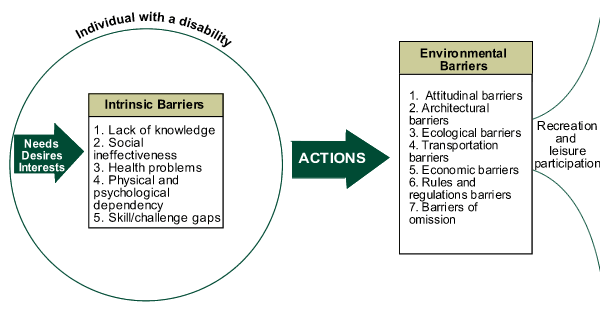 |
| Intrinsic and Environmental Barriers |
Source: Smith, Austin, Kennedy, Lee and Hutchison, (2005). Inclusive and special recreation: Opportunities for persons with disabilities (5th ed.). Boston: McGraw Hill. p. 81
Intrinsic Barriers
While it is evident that many of the barriers faced by individuals with disabilities are external, a person with disabilities is often faced with constraints resulting from his or her own physical, emotional, and cognitive limitations. These limitations or barriers reside within the individual and can be temporal or permanent. Often, the barriers that block fulfillment of individual needs, desires, and interests may arise or be related to causes such as parental overprotection, inadequate educational opportunities, or segregation from peers (Smith, Austin, Kennedy, Lee, and Hutchison, 2005).
Environmental Barriers
Despite an individual's ability to cope with intrinsic barriers, environmental barriers may also prevent an individual from participating in recreation activities. These barriers can be physical, such as architectural or trees and mountains, or can be imposed by society or economic conditions, such as negative attitudes and finances. While an individual may be able to overcome intrinsic barriers through personal action, since environmental barriers are imposed on the individual, the individual may feel helpless to overcome them.
